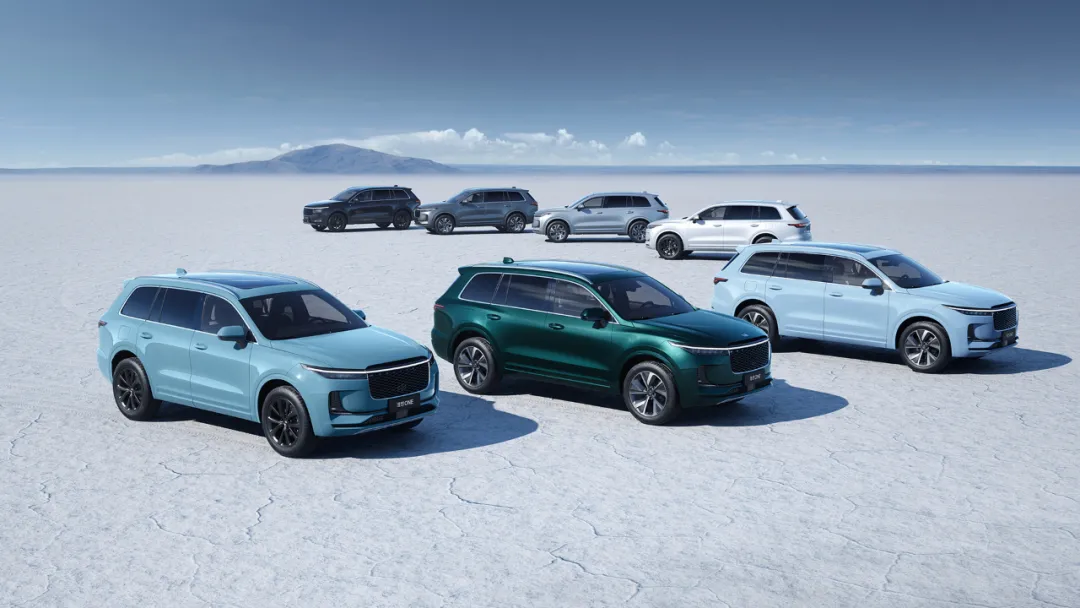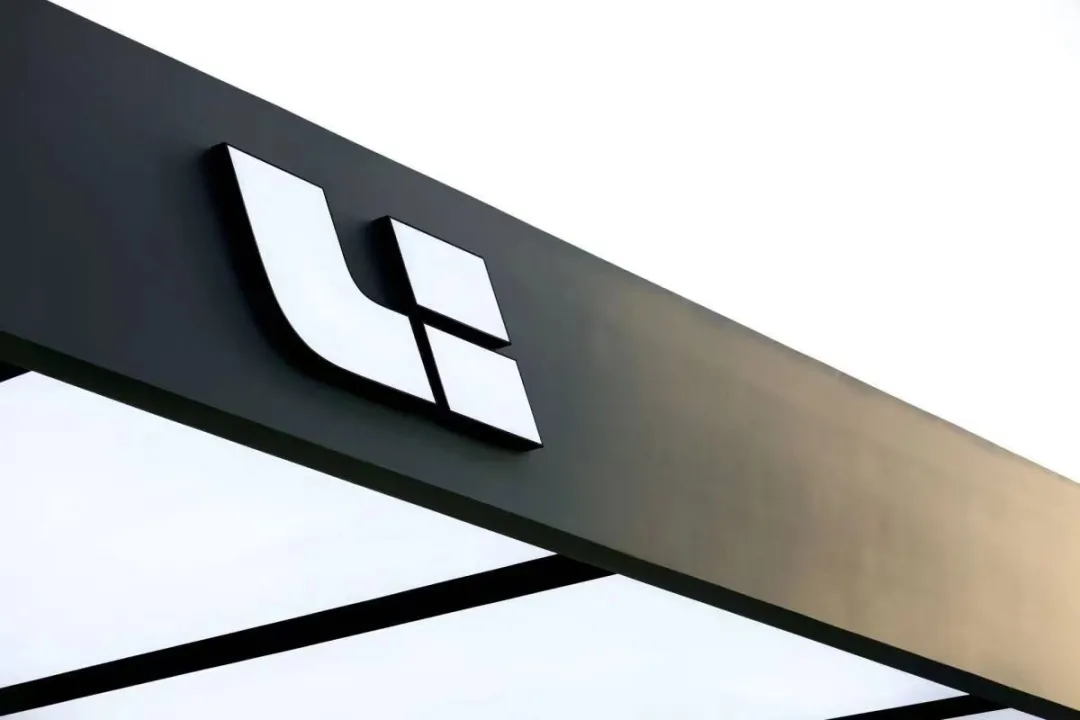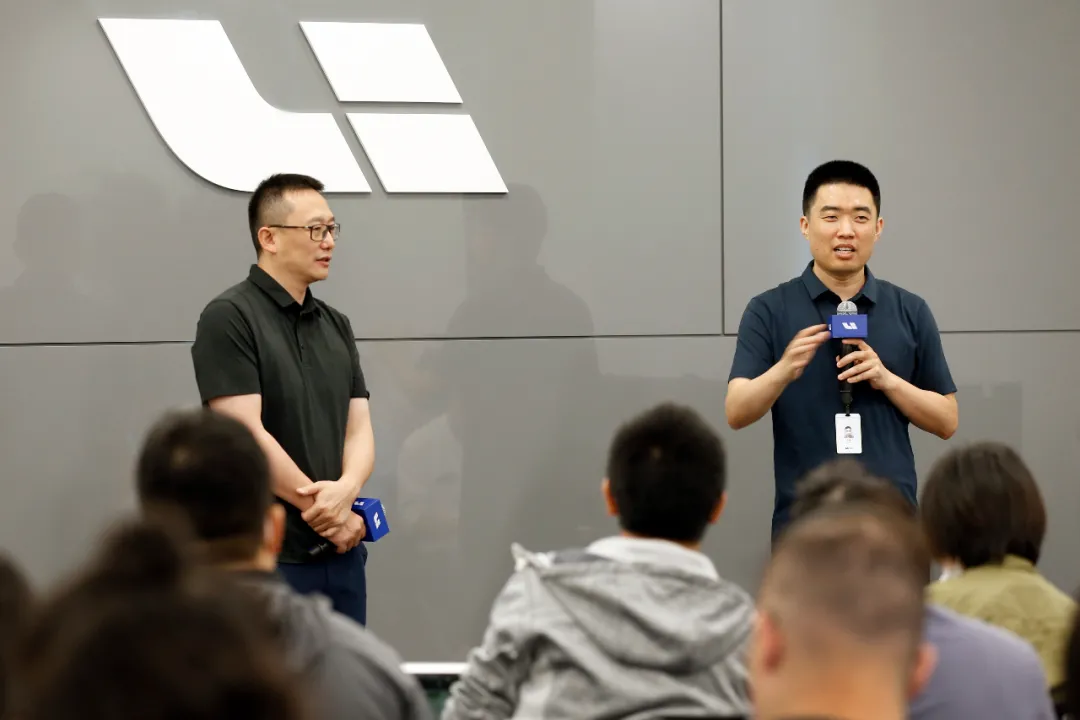Roomy, a media under the China City Community Network, focusing on the evolution of the automotive travel industry chain
Original Article: Roomy
On May 25th, at the R&D headquarters of Ideal Automotive in Shunyi, Beijing, a showroom for a press conference was set up in a gap of the office building. Some said it was to save money, others said it wasn’t actually a cost-saving measure.
However, Li Xiang obviously didn’t care about these discussions on the sidelines, standing on the stage, he glanced down at the time. “Starting at 20:00 sharp, not a second later, just right.”
This statement was a pun.
Li Xiang is not someone who often makes promises, but once he sets a flag, he will do everything in his power to fulfill it. Making the flag fall? That’s not Li Xiang’s style.
From the first day of the launch of the first-generation Ideal ONE, to the launch of the facelifted model, it took Li Xiang more than 30 months to fulfill an initial promise of “only selling this one model of car for three years”, and then set a short-term promise of “Ideal ONE monthly sales exceed ten thousand.”
Sure enough, the Ideal ONE, which had been criticized before, has sold nearly 55,000 units, making it the top-selling electric SUV in China in 2021, after selling for almost three years.
Or perhaps this is what Li Xiang meant by “just right”?
“Monthly sales exceeding ten thousand”? It’s difficult.
After the facelift, Li Xiang set a goal of “selling over ten thousand units monthly by September” for the Ideal ONE.
This confidence comes from two aspects.
First, the Ideal ONE is the highest single model delivery volume among the new forces of carmakers, and the best-selling Chinese new energy SUV.
Data shows that in 2020, Ideal ONE sold more than 30,000 units, and continued to climb in 2021. Since the start of deliveries in December 2019, more than 55,000 units of Ideal ONE have been delivered.
To achieve this sales volume is not really surprising. Amidst the fierce promotion of “pure electric cars” by the new forces of carmakers, the Ideal ONE has positioned itself precisely by making a range-extending electric vehicle that combines the advantages of both fuel and pure electric vehicles.
Range anxiety is deeply ingrained in consumers.
NIO’s choice is to change it, “where gasoline cars can go, electric cars can also go,” by investing heavily in charging stations and battery swap stations.
Ideal’s choice is to reap the benefits of it. By using half of the batteries and adding an engine, Ideal ONE has established itself in the middle to high-end market with a price of fuel cars, the experience of electric cars, and the range of fuel cars.
Li Xiang asked loudly, what is the core selling point of Ideal ONE?”Range anxiety, space, and driving experience stand out as top priorities” appear boldly on the big screen. The constantly rising market recognition eased Li Xiang’s worries and even brought a hint of joy.

Secondly, the new model of Li Xiang ONE has made up for the shortcomings of the previous version and achieved upgrades.
Despite the advantages of Li Xiang ONE, the feedback from car owners also highlighted the obvious flaws: high fuel consumption when using the generator on long-distance highways, and discomfort in the seating arrangement.
Compared to the previous version, which was delivered by the end of 2019, the main change in the new model of Li Xiang ONE is upgrading the hardware.
In terms of the electric system, the car has switched to a three-in-one electric drive, with an NEDC range of 1080 km, including an increase in pure electric range to 188 km.
In terms of intelligent and auxiliary operating systems, the vehicle is equipped with an 8-million-pixel visual recognition camera, two of Horizon Robotics’ latest “Journey 3” autonomous driving chips, and five of Bosch’s fifth-generation millimeter-wave radar.
Regarding seating comfort, “the second row has added an electric seat backrest function, and the legroom of the third row has increased by 41mm.” The sponge and massage functions have also been added to improve comfort, while the seven-seater model has been removed.
The upgrade has earned applause.
However, it should be noted that the new model of Li Xiang ONE has not upgraded the much-questioned “1.2T three-cylinder engine”. Although Li Xiang ONE has adopted many upgrades to improve driving comfort, the 1.2T generator engine still has an impact on vehicle NVH.
Compared to the previous model, the new model costs an additional 10,000 yuan after comprehensive upgrades and non-upgrades.
Consumers who went for a test drive of Li Xiang ONE after midnight has given Li Xiang car co-founder and CEO Shen Yanan a sense of confidence. He believes that current orders also show such trends. “The number of orders on the night of the press conference was many times higher than our daily order volume.”
Nevertheless, selling over ten thousand cars per month is still a challenging target.

At present, no new car company can break through the 10,000-car mark. In the near future, only the Li Xiang ONE model will be available for sale, and it will be difficult to achieve selling more than ten thousand cars per month by relying on a single model.
Moreover, the available cars and configurations are indeed limited. Shen Yanan also admits that only by choosing the nine officially released popular configurations can consumers get early delivery; other options require a waiting time of several weeks.
It seems that keeping the flag flying high is exceptionally challenging.
The Ideal Company is Catching Up.To understand why Li Xiang says “just right”, we need to start with the upgrades in the new Ideal ONE model.
Ideal ONE has received positive feedback despite not being on par with Tesla’s brand, Xpeng P7’s pure electric endurance, or NIO’s practical autonomous driving. Li Xiang is aware of these issues, particularly the shortcomings in intelligent driving and auxiliary systems. If Ideal ONE cannot catch up quickly when Tesla, Xpeng, and NIO launch NOA and similar functions, Idealism cannot be realized.
“Our first goal is to catch up with our competitors’ capabilities.” Therefore, Ideal has spared no expense in R&D investment.
Based on the RMB1.1 billion R&D investment in 2020, Ideal’s R&D investment has significantly increased. The R&D cost in 2021 will be approximately RMB3 billion.
“There are two dimensions to R&D investment, one is the model, and the other is technology, which are interlinked. From a budget perspective, we can already see that several hundred billion RMB of R&D costs will be needed in the future. This will span many years and will likely exceed RMB3 billion this year.”
The reason for the continuous increase in R&D investment is twofold.
“First, the challenges we will face in the next few years are completely different, and second, we have money after our IPO last year.”
Li Xiang is very direct about this. Before the IPO, with limited funds, investment in R&D would be very cautious to maintain survival. After financing, the most important goal is to push R&D to new heights.
As with all competitors, after obtaining funds, Ideal has bet big on autonomous driving and auxiliary systems.
Ideal ONE is not only the world’s first production model with an 8 million pixel camera but also has canceled the EyeQ4 perception chip in favor of two Horizon Journey 3 series chips.
Journey 3 provides much larger computing power than EyeQ4. The physical computing power of two Horizon Journey 3 chips can reach 10 TOPS. The perception calculation FPS performance is equivalent to a 30 TOPS GPU, and the calculation power consumption is only 6W. In addition to the 8 million-pixel camera and the 5 millimeter-wave radars throughout the car forming 360-degree full coverage of the vehicle, it ensures a broader range and higher precision perception capability.
For Ideal, switching chips is a necessary step towards achieving higher levels of autonomous driving.”Despite the accumulated capabilities in the past, Mobileye did not have the ability to play in the Mobileye era, but it can be leveraged in the Horizon era for recognizing traffic lights and horizontal vehicles, as well as road bumps and obstacles.
Those who know about Li Xiang understand that he is not someone who is willing to hand over control to others.
On the road to full-stack self-research, Ideal does not allow a “black box” state of chips to appear in cars. Therefore, Horizon is not only a chip provider, but also deeply cooperates with Ideal’s autopilot research and development.
In addition to changing the chip, Ideal has also developed an operating system. The purpose is to replace the non-entertainment end QNX system, which can meet the needs of Ideal cars and development tool chains.
“Ideal’s engineers are really happy when they choose to use their own algorithms instead of someone else’s algorithms.” Although the Ideal engineers are not willing to serve any automaker, the current Li OS cannot be open to users yet.
As for when to open, Li Xiang did not answer. “Our self-developed autopilot system can compete head-on with Huawei and Tesla next year.” Hopefully, Ideal is not too full and the reality is too bony.
In addition, Ideal has already made autopilot subscription services standard.
The 2021 Ideal ONE is equipped with the full-stack self-developed “Ideal AD Advanced Driving Assistance System”, which achieved driving assistance functions similar to NOA, will be launched in September this year, and will be completely free. Currently, Tesla’s autopilot system and XPeng’s NGP advanced auxiliary driving system need to be paid for. XPeng relies on automatic driving functions to generate revenue and has already received more than RMB 80 million in revenue.
“Regarding autopilot and assisted driving functions, we hope they can be standard.”
Li Xiang remained as straightforward as ever, and personally did not accept the concept of a car with high and low configurations. One car has automatic driving and one car does not. One car is high-end and one car is low-end.
“Whether it is more than 4,000 yuan for the iPhone 6, or the 12 Pro Max, the operating system should be the same.” He insisted that assisted driving and automatic driving are the bottom-level operating systems for intelligent electric vehicles.”>Actually, many automakers, including Tesla, have not achieved good results with optional features, currently Tesla’s FSD function has only been selected by approximately 2% of customers in China, which can be offensive.
However, the ideal ownership is only more than 50,000 vehicles, and it is too early to talk about software subscription revenue.
Understand cars, and even more so, understand people
Li Xiang believes that Ideal Automobile has crossed the first stage of development and entered the second stage of strategic cycle. The focus is on new product development and autonomous driving technology.
Therefore, his time is divided into two halves, understanding cars and understanding people.
One is to achieve strategic goals and continuously improve organizational and management capabilities; the other is to focus on the research and development of the next generation of products and build a management system for multiple products.
“These two things basically occupy 100% of my time.”
In a one-hour interview, Li Xiang and Shen Yanan answered more than 40 questions, most of which focused on “autonomous driving and intelligence”, “technology and research and development”, “vehicle planning and company management”, and so on.
“The reserve is definitely very important when going to war.” Even with a holding of 55,000 vehicles, IDEAL still does not have a fully self-sufficient ability.
And, due to the lack of early R&D investment and reserves, IDEAL currently has only one model available for sale, IDEAL ONE. IDEAL must accelerate the development of the second-generation range-extending platform and pure electric high-voltage technology.
It is expected that in 2022, Ideal Automobile will launch a full-size high-end range-extending SUV. Starting from 2022, at least 2 new products will be released and delivered to the market every year, and pure electric models will be delivered in 2023.
Obviously, IDEAL’s pace is much faster than before.
On the one hand, it benefits from the acquisition of market experience, on the other hand, IDEAL has more money now.
Currently, IDEAL’s main source of revenue is still vehicle sales. According to financial data, in the first quarter of 2021, IDEAL’s automobile sales revenue accounted for 96.65% of revenue, XPeng Motors was 95.22%, and NIO was 92.78%.
Based on this, researching and developing new products and technologies is still the top priority.
Li Xiang proposed Ideal’s strategic goal for the next 5 years: a 20% market share, becoming China’s top intelligent EV company. He also pointed out that the decisive moment for the battle in autonomous driving will be in 2030.
Time is running out, and competition is faster than expected. At this time, Li Xiang, who is preparing to set sail for the second phase, encountered a problem that XPeng and NIO have also encountered.
Knowing technology is not enough, knowing people is the new learning.“`
“Li Xiang, you owe an explanation to the car owners who were supposed to receive their cars in April and May.”
After the launch of the Li Auto ONE, Li Xiang’s Weibo was flooded with criticism and questioning comments from car owners.
As the 2021 version of the Li Auto ONE started production and sales, the production of the 2020 version will cease. This has caused frustration among car owners who have a short delivery time and has led to a chain reaction.
Consumers are the source of Li Auto’s wealth. Mishandling the situation will leave a lasting negative impact on the company’s reputation.
Li Xiang stated that in the second half of the year, Li Auto will offer four paid upgrade plans for old car owners, including upgrades for the first and second row seats, an electric suction door with electronic child locks, a sports grille upgrade, and an automatic anti-glare frameless interior rearview mirror.
However, these upgrades have still not satisfied old car owners as Li Auto ONE’s advanced driving assistance system cannot be addressed.
Rapid iteration is an inherent characteristic of smart electric vehicles. Both NIO and XPENG have encountered similar doubts from old car owners about product iteration, leading to widespread dissatisfaction. This is a test that must be handled with care.
Li Xiang, who claims to understand cars and users, must allocate more time to deal with the dissatisfaction of car owners. ”
“`
This article is a translation by ChatGPT of a Chinese report from 42HOW. If you have any questions about it, please email bd@42how.com.
